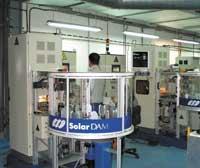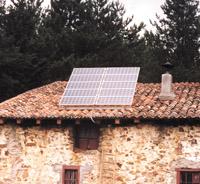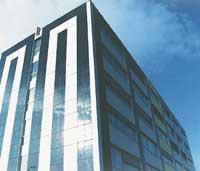Kaixo, photovoltaic cell sorter
2003/01/01 Andonegi Beristain, Garazi - Elhuyar Zientziaren Komunikazioa Iturria: Elhuyar aldizkaria
Today, renewable energies are on everyone's lips. Among them, solar energy is also very important. There are numerous ways to use this energy, including solar panels. Solar panels are made up of photovoltaic cells, so called the 80-100 grids that form the panel.
These photovoltaic cells are classified according to the power they produce. In fact, the only cell that produces less power than others is sufficient to limit solar panel production. Why? The maximum current of the cell that produces a lower power is lower than that of the others, so it does not allow the passage of more currents than its maximum. Thus, it delimits the current of the panel and the power, which is the product of the current power by the voltage.
From prototypes to machines

In the 1990s, the Institute of Microelectronics Technology of Bilbao, TiM, proposed an advanced photovoltaic cell measurement system in response to Isofoton's demand. The photovoltaic cell classifier was called Kaixo.
That initial proposal became a prototype in a short time. But if that prototype measured the cells properly, it was not yet fully automatic.
However, since 1998, due to the increase in renewable energy, several companies grew dramatically, including Isofoto. In fact, Isofoton is the first European company and the seventh in the world in the production of photovoltaic cells. That same year, in 1998, Isofoton asked TiMi for a second prototype.
The second prototype had to be more precise and automated than the first. Stricter control of the stability of light and temperature was essential. In addition, it had to be adapted to the industrial world, to comfortably carry out the maintenance of the machine and introduce it into the production chains.
Between 6 and 7 machines have been manufactured since the new prototype. The machines measure the 60,000 photovoltaic cells manufactured by Isofoton a day. In addition, these measures can be carried out during the production of cells, detecting the process that has caused the appearance of a defective cell. In addition, all these measurements were done manually before prototypes and automation has been a great advantage, since in addition to saving time, measurements are much more accurate.
Best solar panels
Now, several studies seek to increase the power of each cell. In this way, the solar panels of 20 to 30 m2 needed to meet the energy needs of a family would be smaller. This is because depending on the surface costs increase because more cells, more electrical wires, more crystals, etc. are needed.
In the future, TiMen will continue to research to improve manufacturing processes, achieve more efficient cells and turn them into a more automated industry.
- Project title Kaixo. Industrial automatic sorter of photovoltaic cells.
- Objective To develop an industrial automatic sorter of photovoltaic cells.
- Project director Juan Carlos Jimeno and Victor Martínez.
- Working group J.C. Jimeno, V. Martínez, R. Gutierrez, F. Recart, G. Well, F. Hernando, Mª J. Saenz, Mª V. Rodríguez, C. Ikaran, S. Uriarte.
- •
- Financing: UPV, Ministry of Science and Technology and Profit Program.

Gai honi buruzko eduki gehiago
Elhuyarrek garatutako teknologia





